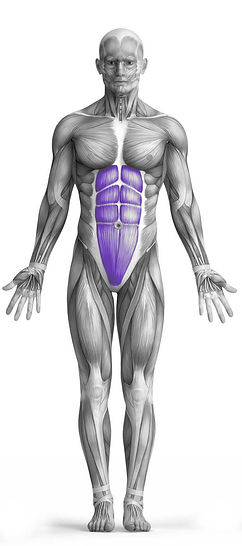Rotating Mountain Climber 101 Video Tutorial
0

Exercise Synopsis
Target Muscle Group
Abs
Secondary Targets
None
Execution
Compound
Force Type
Isometric
Required Equipment
Bodyweight
Fitness Level
Intermediate
Variations
None
Alternatives
None
Timer
Hour
Minute
Second
Stopwatch
00:00:00:00
Overview
The Rotating Mountain Climber is an effective bodyweight exercise that primarily targets the abs, specifically the obliques, by engaging the core during a dynamic movement. In this exercise, you begin in a high plank position and alternate bringing each knee towards the opposite elbow while twisting your torso slightly with each movement. This rotational motion helps activate the obliques while still engaging the rest of the abdominal muscles. As a bodyweight exercise, it requires no equipment and can be performed anywhere, making it a convenient and challenging addition to any core-focused workout.
How to Perform
Start in a high plank position with your hands directly under your shoulders, ensuring your body forms a straight line from head to heels.
Bring one knee towards the opposite elbow while twisting your torso slightly, aiming for your hip to reach about a 90-degree angle.
Control the movement as you slowly return the leg back to the starting plank position, maintaining a stable core.
Repeat this motion for the designated number of repetitions, alternating sides with each rep to fully engage the obliques and core muscles.
Tips
Avoid holding your breath during the exercise. Relying on your breath to stabilize your body can lead to poor form. Focus on maintaining stability without depending on breathing for support.
Perform the movement slowly and deliberately. The objective is to maintain control throughout the exercise, not just to rush through the repetitions.
Exhale as you bring your knee towards the opposite elbow, ensuring a smooth and controlled motion.
Be mindful not to raise the knee too high. If you notice your pelvis tilting or your spine losing its neutral position, you've likely gone too far with the movement.
How Not to Perform
Avoid Arching Your Back: Do not let your lower back sag or your hips drop during the exercise. This can lead to unnecessary strain on your spine and reduce the effectiveness of the core activation. Keep your body in a straight line from head to heels.
Don’t Hold Your Breath: Holding your breath can lead to tension in the body, which might affect your control and form. Focus on maintaining steady breathing to stay relaxed and ensure optimal muscle engagement.
Avoid Jerky Movements: Do not rush through the exercise or use momentum to move your knees. Perform the movement slowly and with control, keeping your core engaged to prevent swinging your legs or losing stability.
Don’t Raise Your Knee Too High: Lifting your knee too high can cause your pelvis to tilt under, which will disrupt your neutral spine position. Only bring your knee to a comfortable height that allows you to maintain good form and core stability.
Don’t Let Your Hands Slide Out of Position: Ensure your hands remain directly under your shoulders throughout the exercise. Moving them too far forward or backward will compromise your balance and reduce the effectiveness of the movement.
Avoid Sinking Your Hips: Do not let your hips drop towards the ground. This will put undue stress on your lower back and make it harder to engage your abs. Keep your hips in line with your shoulders and heels.
Don’t Rotate Too Much: While the exercise involves a slight rotation, excessive twisting of the torso can strain your lower back. Focus on a controlled twist to engage the obliques without over-rotating.
Variations
Variations of fitness exercises refer to different ways of performing a specific exercise or movement to target various muscle groups, intensities, or goals. These variations aim to challenge the body differently, prevent plateaus, and cater to individuals with varying fitness levels.
Alternatives
Alternative exercises in fitness refer to different movements or activities that target similar muscle groups or serve the same training purpose as the primary exercise. These alternative exercises can be used as substitutes when the original exercise is unavailable or challenging to perform due to various reasons such as equipment limitations, injuries, or personal preferences.



